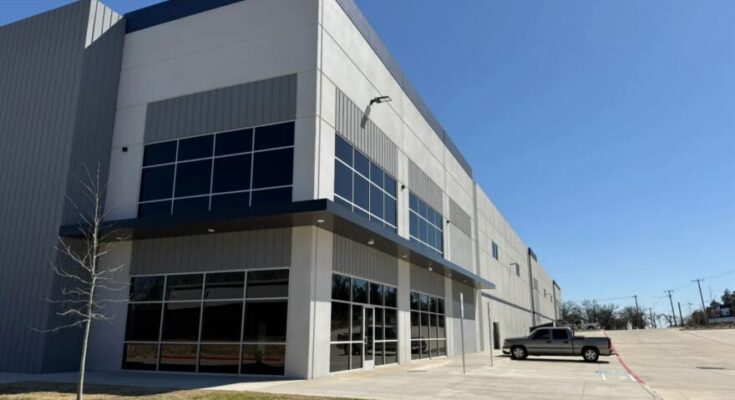Texas A\&M to Launch \$24.5 Million Emergency Management Center in East Fort Worth.
Texas A\&M University is set to open a state-of-the-art emergency management hub in east Fort Worth, a significant investment totaling \$24.5 million that underscores the institution’s commitment to enhancing disaster preparedness and response capabilities in the region. This new facility will serve as a crucial center for coordinating emergency operations, training first responders, and fostering collaboration between multiple agencies to better protect communities in times of crisis. The development of the hub reflects Texas A\&M’s longstanding leadership role in emergency management education, research, and practical application, and it positions the university as a vital resource for Fort Worth and the surrounding areas.
The emergency management hub is designed to integrate cutting-edge technology with comprehensive training programs tailored to meet the complex demands of modern disaster scenarios. As natural disasters, industrial accidents, and public health emergencies become more frequent and unpredictable, the need for a well-organized and capable emergency response infrastructure grows ever more urgent. Texas A\&M’s investment in this facility represents a proactive approach to addressing these challenges, ensuring that responders are equipped with the skills, knowledge, and tools necessary to save lives and minimize damage.
Located strategically in east Fort Worth, the new center is positioned to serve a diverse range of communities that face a variety of risks, including severe weather events such as tornadoes, floods, and storms that commonly affect North Texas. The facility will also be integral in planning and coordinating responses to other emergencies, including hazardous material incidents, large-scale evacuations, and public health crises. By situating the hub in this area, Texas A\&M not only expands its geographical reach but also enhances the resilience of a region that has seen rapid growth and increasing complexity in its emergency needs.
At the core of the emergency management hub’s mission is education and training. Texas A\&M has long been recognized for its comprehensive programs in emergency management, disaster science, and homeland security, offering undergraduate and graduate degrees that combine theoretical knowledge with hands-on experience. The new facility will amplify these educational efforts by providing students, professionals, and first responders with a real-world environment to practice and refine their skills. Simulation rooms equipped with advanced technology will recreate disaster scenarios, allowing trainees to engage in realistic exercises that prepare them for the pressures and unpredictability of actual emergencies.
Collaboration is another key pillar of the emergency management hub. Disasters do not respect jurisdictional boundaries, and effective response requires seamless coordination among local, state, and federal agencies, as well as non-governmental organizations and private sector partners. The new center will act as a convening space where these entities can work together to develop integrated response plans, share vital information, and conduct joint training exercises. By fostering these partnerships, Texas A\&M is helping to build a unified front that can respond more swiftly and effectively when disaster strikes.
The \$24.5 million investment includes the construction of a modern facility outfitted with the latest communication and command systems, designed to enable rapid decision-making and coordination during emergencies. The hub will feature a 24/7 operations center capable of monitoring real-time data and deploying resources as situations unfold. This technology-driven approach is essential for managing the complexities of multi-agency responses and ensuring that all stakeholders have access to accurate and timely information.
Beyond its operational role, the emergency management hub will serve as a research and innovation center dedicated to advancing the science of disaster response and resilience. Texas A\&M faculty and researchers will use the facility to study emerging threats, develop new strategies for mitigation, and evaluate the effectiveness of different response techniques. This research will not only inform local practices but also contribute to national and global knowledge, positioning Texas A\&M as a leader in the field.
The economic impact of the new hub is also significant. The construction and ongoing operation of the facility will create jobs and stimulate local businesses, contributing to the economic vitality of east Fort Worth. Furthermore, the presence of a major emergency management center enhances the attractiveness of the area for other investments by providing a layer of safety and preparedness that appeals to companies and residents alike.
Community engagement will be a vital component of the hub’s activities. Texas A\&M plans to offer public education programs, workshops, and outreach initiatives aimed at increasing awareness of disaster preparedness among residents. By empowering individuals and families with knowledge and resources, the university helps build a culture of resilience that reduces the overall impact of emergencies.
The establishment of this emergency management hub comes at a critical time. The frequency and intensity of natural disasters have been on the rise, driven by climate change and other factors, while the threats posed by pandemics and technological failures remain ever-present. In this context, having a dedicated, well-equipped center focused on preparedness and response is more important than ever. Texas A\&M’s commitment to creating such a facility demonstrates foresight and leadership that will benefit countless lives.
Moreover, the hub will serve as a training ground for the next generation of emergency management professionals. Students will have the opportunity to learn from experts in the field, participate in simulations, and engage in real-world problem solving. This experiential learning prepares graduates to enter the workforce with the skills and confidence necessary to lead effective emergency responses, ensuring that Texas and the broader nation have a robust pipeline of qualified personnel.
The integration of technology at the hub will include advanced mapping systems, data analytics platforms, and communication networks that connect responders across different agencies and jurisdictions. These tools enhance situational awareness and allow for more efficient allocation of resources. For instance, during a flood event, responders can track water levels in real time, predict areas at greatest risk, and coordinate evacuations with precision. This level of capability can significantly reduce response times and improve outcomes for affected communities.
Texas A\&M’s emergency management hub will also play a role in regional planning efforts. By working closely with city planners, public safety officials, and community leaders, the center will contribute to developing comprehensive strategies that integrate disaster risk reduction into urban development. This holistic approach ensures that as Fort Worth and surrounding areas continue to grow, they do so in ways that minimize vulnerability and enhance resilience.
In addition to serving public agencies, the hub will provide training and resources to private sector partners, including businesses and critical infrastructure operators. Disruptions caused by disasters can have cascading effects on the economy and society, and involving private entities in preparedness efforts is essential. Through the hub, Texas A\&M will facilitate workshops and collaborative initiatives that help businesses develop continuity plans and improve their ability to withstand and recover from emergencies.
The location in east Fort Worth is particularly strategic given the area’s mixture of residential, commercial, and industrial zones. The hub’s presence will strengthen emergency preparedness across these sectors, ensuring that responses are coordinated and tailored to the unique risks each community faces. This localized focus complements Texas A\&M’s broader statewide and national efforts in emergency management, creating a comprehensive network of preparedness.
Funding for the \$24.5 million project reflects the importance placed on emergency management by government and private stakeholders. The investment covers not only the physical infrastructure but also the technological systems, staffing, and program development required to operate the hub effectively. This level of support enables Texas A\&M to build a world-class facility that meets the highest standards in emergency response and education.
The new emergency management hub is expected to become fully operational within the next year, with plans underway for a phased rollout of its various programs and capabilities. Texas A\&M is coordinating closely with local officials and community partners to ensure that the transition is smooth and that the center’s benefits are realized as quickly as possible.
Looking ahead, the hub will serve as a model for similar facilities across the country. Its combination of education, research, operational coordination, and community engagement represents a holistic approach to emergency management that addresses the needs of all stakeholders. By leveraging Texas A\&M’s expertise and resources, the center will help set new standards for preparedness and resilience.
The opening of Texas A\&M’s \$24.5 million emergency management hub in east Fort Worth marks a major advancement in the region’s disaster preparedness infrastructure. The facility will provide vital training, coordination, and research capabilities that enhance the ability of first responders and communities to face emergencies effectively. Through its strategic location, advanced technology, and emphasis on collaboration, the hub exemplifies Texas A\&M’s leadership in this critical field and will serve as a cornerstone for safeguarding lives and property in North Texas and beyond. This investment is not only a testament to the university’s dedication to public service but also a vital step forward in building safer, more resilient communities for the future.



